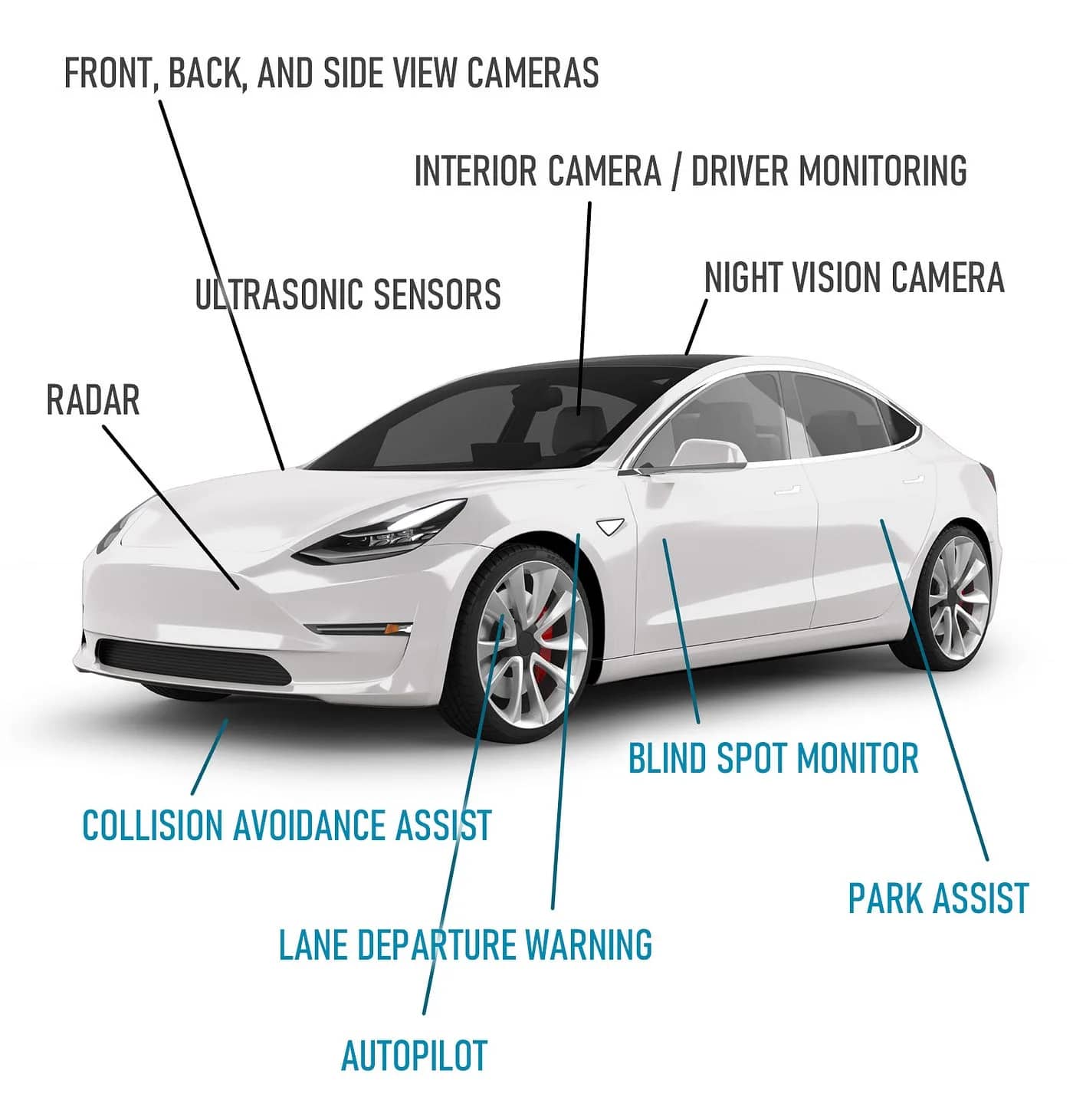ADAS stands for Advanced Driver-Assistance Systems. These are technologies incorporated into vehicles to enhance safety and improve the driving experience. ADAS features typically use a combination of sensors, cameras, radar, and lidar to detect their surroundings and provide the driver with information or take corrective actions.
Table of Contents
Steer Towards Safety: A Comprehensive Guide to Advanced Driver Assistance Systems (ADAS)
Imagine a driving experience where your car not only takes you places but actively helps you get there safely. That’s the promise of Advanced Driver-Assistance Systems (ADAS), a suite of technologies transforming modern vehicles into intelligent companions on the road.
What is ADAS and How Does it Work?
ADAS encompasses various features that utilize a combination of sensors (cameras, radar, lidar), software, and computing power to perceive the car’s surroundings and assist the driver. These systems can provide real-time information, issue warnings about potential hazards, and even take partial control of the vehicle in critical situations.
Here’s a breakdown of what Advanced Driver Assistance Systems offers:
- Increased Safety: ADAS features can help prevent accidents by warning drivers of potential hazards and even taking some control of the vehicle in critical situations.
- Reduced Driver Stress: By automating some driving tasks and providing helpful information, ADAS can make driving less stressful and more enjoyable.
- Improved Traffic Flow: Some ADAS features, like adaptive cruise control, can help maintain a safe distance between vehicles and potentially improve traffic flow.
Some common examples of Advanced Driver Assistance Systems features include:
- Automatic Emergency Braking (AEB): AEB employs sensors to detect potential collisions and automatically applies brakes to avoid or mitigate an impact Source: National Highway Traffic Safety Administration (NHTSA)
- Lane Departure Warning (LDW): LDW alerts the driver when the vehicle starts to drift out of its lane unintentionally, often using visual or auditory cues Source: AAA – Advanced Driver Assistance Systems (ADAS)
- Blind Spot Detection (BSD): BSD warns the driver of vehicles approaching from behind in their blind spot, a common cause of accidents while changing lanes Source: Insurance Institute for Highway Safety (IIHS) – Blind Spot Detection.
- Adaptive Cruise Control (ACC): ACC maintains a set distance from the car in front, automatically adjusting speed as needed, reducing driver fatigue on long journeys Source: Car and Driver – Adaptive Cruise Control Explained.
- Traffic Sign Recognition (TSR): TSR reads traffic signs and displays them on the dashboard, helping drivers stay informed, especially in unfamiliar areas Source: Car Talk – Traffic Sign Recognition.
Benefits and Limitations of ADAS
While ADAS offers significant advantages, it’s crucial to understand its limitations:
- ADAS is not a substitute for safe driving: Drivers must remain alert, focused, and in control of the vehicle at all times. Overreliance on ADAS can lead to complacency and potentially dangerous situations.
- System limitations: ADAS features can have limitations in certain weather conditions, poor visibility, or complex driving scenarios.
- Not all ADAS features are created equal: The effectiveness of ADAS can vary depending on the manufacturer, model, and specific implementation.
The Future of ADAS
ADAS technology is constantly evolving. As sensor technology improves, processing power increases, and algorithms become more sophisticated, we can expect to see even more advanced features emerge in the coming years. These might include:
- Automated emergency steering: Systems that can take over steering in critical situations to avoid collisions.
- Vehicle-to-everything (V2X) communication: Cars communicating with each other and infrastructure for enhanced awareness and accident prevention.
- Highly automated driving: Potentially leading to semi-autonomous or even fully autonomous vehicles in the future.
Embrace a Safer Driving Experience:
ADAS represents a significant leap forward in car safety and driver assistance. By understanding these systems and using them responsibly, drivers can benefit from a more secure and comfortable driving experience. Remember, ADAS is there to assist you, not replace your attentiveness on the road. So, buckle up, leverage the power of technology, and steer towards a safer future!
It’s important to note that ADAS features are not a replacement for safe driving practices. Drivers should always remain alert, focused, and in control of the vehicle. ADAS should be seen as a valuable additional safety measure.
As technology continues to develop, ADAS features are becoming increasingly sophisticated and widespread. In the future, they may play an even greater role in creating autonomous vehicles.

